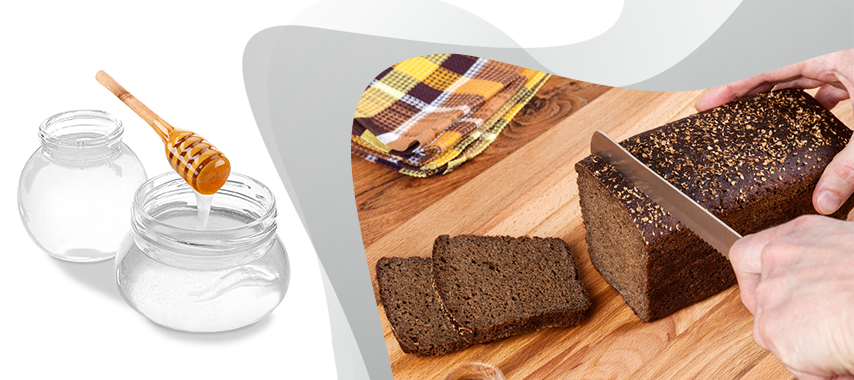

Published on Jan 18th, 2024

In the broad and complex culinary arts tapestry, malt syrups are unique. Malt syrup is the secret gem of the culinary arts; they are the flavor, color, and texture catalyst that gives food life and flavor to every mouthful bite.
Although most of us are familiar with staples like barley malt syrup, a vast uncharted territory must be discovered. Specialized malt syrups include unique properties and organic ingredients that can elevate your cooking to a new level.
Consider malt syrups to be your kitchen's artisans. Malt syrups take on the role of your kitchen's artists, delicately and surprisingly complementing your food. In this blog, we will go beyond what we already know and discover the unique characteristics of malt syrups. It's like finding new flavors for your palate. Now, let's explore the world of malt syrups and see how they may elevate your cooking and bring a new life to your dishes.
Before venturing into specialty malt syrups, one must have a firm grasp of the fundamentals. Let's explore the subtleties of classic malt syrups, learning about their history, intricate production methods, and various applications in cooking.
Classic malt syrups like the well-known barley malt syrup are like the building blocks of cooking. They are formed like a symphony of precisely timed movements emerging from malted grains. They are made from grains that undergo a series of steps that result in a rich golden syrup, including soaking, sprouting, and drying.
Rice malt syrup is a naturally occurring sweetener derived from fermented brown rice. Usually from sprouting barley or other grains, cooked rice is fermented with enzymes to create rice malt syrup. During fermentation, the enzymes in the rice break down its starches into simpler sugars, creating rice malt syrup, a sweet liquid.
An outline of the production process is provided below:
Cooking Brown Rice: Brown rice is cooked until tender and prepared for fermentation.
Enzyme inoculation: Cooked rice is mixed with sprouted barley or other grains that contain enzymes. These enzymes aid in the conversion of the rice's complex carbs into sugars.
Fermentation: The combination is left to ferment so the enzymes can change the rice's starches into sugars. It may take many days to complete this fermenting process.
Concentration and Straining: The liquid is strained to eliminate particles following fermentation, leaving a delicious liquid behind. After that, this liquid is usually boiled or simmered to concentrate the sweetness and produce the finished rice malt syrup.
The comparatively low glucose content of rice malt syrup makes it a valuable natural sweetener and a possible substitute for people with high glucose sensitivity.
Malted rye grains make the sweet, viscous liquid known as rye malt syrup. It is a concentrated version of the sugars extracted from rye grains by soaking them in water, letting them sprout, and then drying them under carefully regulated conditions. Enzymes in the grains are activated during the malting process, transforming starches into sugars that can be fermented.
After the malted rye grains undergo this process, the liquid is taken out, condensed, and made into syrup. Rye malt syrup has a rich, strong flavor profile while retaining rye's unique flavors and attributes.
Sweet syrups made from malting grains besides barley are known as specialty grain malt syrups. Specialty grains like oats or other alternative grains are soaked, allowed to germinate, and then dried in a kiln. Enzymes are released during the malting process, converting the starches in the grains into sugars that may be fermented, producing a syrupy liquid with distinct flavors and properties.
The following are some instances of specialty grain malt syrups and possible attributes for them:
Oat Malt Syrup: A creamy, slightly nutty flavor can be added using this syrup derived from malted oats.
Spelt Malt Syrup: Made with malted spelt grains, this syrup has a potentially nutty and sweet taste. Spelt malt syrup is occasionally used to give dishes a distinctive touch in cooking and brewing.
Quinoa Malt Syrup: Made from malted quinoa, this syrup has a faintly nutty and earthy flavor.

These various malt syrups offer several health advantages that improve flavor and general well-being. Rye malt syrup has a high nutritional density and provides vitamins and minerals, which may have advantages over being sweet. Oat malt syrup adds a heart-healthy flavor to meals and is linked to heart-healthy beta-glucans and fiber. Niacin, manganese, and a nutty flavor are added using spelt malt syrup. Quinoa malt syrup satisfies dietary choices and nutritional needs due to its complete protein profile and the advantage of being gluten-free.
Rice malt syrup positions itself as a flexible and nutrient-dense sweetener with a host of health benefits. Made primarily of complex carbs, including maltose, it gives you a steady release of energy and is a stable substitute for sweets that cause sudden increases in blood sugar. Moreover, its lack of gluten satisfies the needs of those who are gluten intolerant or following a gluten-free diet, making it a more appealing healthy sweetener option. Overall, rice malt syrup is a good choice.
The investigation into malt syrups has unveiled an enthralling realm of tastes, textures, and health advantages. It is a unique addition to the culinary world, which ranges from the robust richness of flavors to the health benefits. These malt syrups are the perfect example of the combination of taste and nutrition.
BackBe the first to know about new products, events and offers.